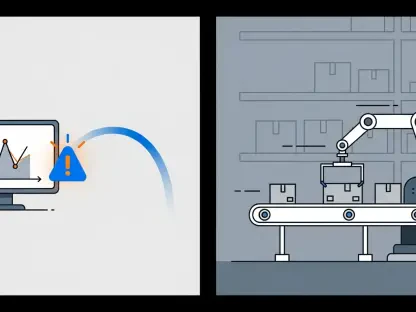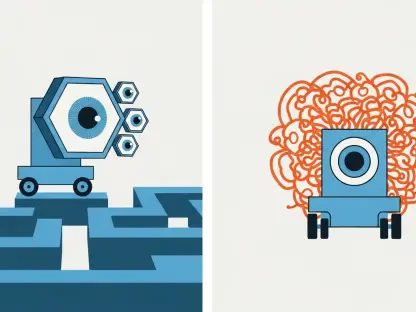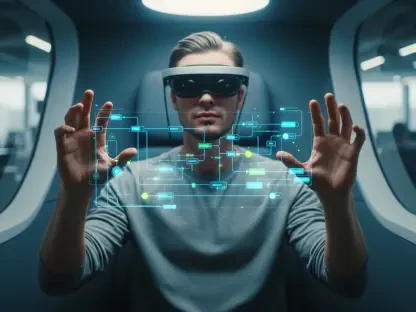In a world where a single medical image can mean the difference between life and death, what happens when the nearest radiologist is hundreds of miles away? Teleradiology, the practice of remotely transmitting and interpreting medical images like X-rays and MRIs, is stepping in to bridge this critical gap, offering a lifeline to those in need. This technology is not just a convenience; it’s a game-changer for hospitals drowning in demand and for rural patients who once faced insurmountable barriers to care. With healthcare systems under unprecedented strain, the rise of this digital solution is redefining how diagnoses are made and treatments are delivered, one scan at a time.
The Urgent Need for a Digital Lifeline
The numbers paint a stark picture: outpatient imaging volumes are projected to rise by 10% over the next decade, while advanced imaging could spike by 14%, according to healthcare analytics firm Vizient. At the same time, a shortage of radiologists—expected to reach 42,000 by 2032—threatens to cripple diagnostic capacity. This perfect storm of rising demand and dwindling expertise has pushed healthcare to a breaking point, making innovative solutions not just desirable but essential. Teleradiology offers a way forward, ensuring that a patient’s location or the time of day doesn’t dictate the quality of their care.
This technology’s significance goes beyond mere numbers. It addresses a fundamental inequity in healthcare access, particularly in rural and socioeconomically challenged areas where only 21% and 19% of U.S. zip codes have access to CT and MRI technologies, respectively, as per a recent study. By enabling remote interpretation of scans, teleradiology ensures that a farmer in a remote county has the same shot at a timely diagnosis as a city dweller. This is the kind of transformation that doesn’t just improve systems—it saves lives.
Breaking Barriers with Remote Diagnostics
Teleradiology’s impact on healthcare delivery is profound, touching multiple facets of a strained system. One of its most immediate benefits is workload management. Cloud-based platforms allow images to be routed seamlessly across regions, balancing the burden on overtaxed radiology departments. Data from Intelerad Medical Systems shows a consistent uptick in monthly imaging traffic through such systems, proving that scalability is no longer a pipe dream but a working reality for many hospitals.
Geographic barriers, long a hurdle for equitable care, are also crumbling under this technology’s reach. Take the example of Ballarat Health Services in Australia, which uses teleradiology to serve 230,000 people across a vast, rural expanse. This model holds lessons for similar communities in the U.S., where remote diagnostics can connect isolated patients with top-tier specialists, ensuring that distance is no longer a death sentence for those needing urgent imaging analysis.
Then there’s the role of artificial intelligence, which is amplifying teleradiology’s potential. AI tools are now capable of detecting subtle issues in scans—like early breast lesions or signs of stroke—faster than the human eye, prioritizing urgent cases for immediate attention. This synergy of human expertise and machine precision is cutting down wait times for critical diagnoses, turning potential tragedies into treatable conditions with remarkable speed.
Hearing from the Frontlines
Insights from industry leaders underscore just how deeply teleradiology has embedded itself into modern medicine. Morris Panner, president of Intelerad Medical Systems, captures this shift with a bold statement: “All radiologists are teleradiologists now.” His perspective highlights an undeniable trend toward cloud-driven, remote workflows as the new standard, a necessity rather than a novelty in today’s high-pressure environment.
Panner’s enthusiasm extends to AI’s role in transforming outcomes, particularly in time-sensitive scenarios like stroke care. He notes that AI-orchestrated workflows can slash delays, directly impacting survival rates by ensuring patients receive treatment within critical windows. This isn’t just theory—real-world applications are already showing results, with rural hospitals leveraging these tools to collaborate with distant specialists, making care feel personal despite the physical divide.
Supporting these views, recent studies on imaging access disparities reveal the urgency of this technology’s adoption. The data emphasizes that without remote solutions, entire swaths of the population risk being left behind, unable to access life-saving diagnostics. Stories from the field, like those of Australian rural health networks, show how teleradiology fosters a sense of connection, proving that technology can humanize care even across vast distances.
Building a Teleradiology Framework for Success
For healthcare systems aiming to harness this innovation, practical steps are within reach to integrate teleradiology effectively. Adopting secure, cloud-based platforms is a foundational move, allowing for efficient image routing and workload distribution. Such systems ensure that no patient is left waiting due to regional staffing shortages or overwhelmed facilities, maintaining a steady flow of diagnostic support.
Another key action is embedding AI tools into clinical workflows. These solutions assist radiologists by flagging abnormalities and prioritizing urgent cases, enhancing both accuracy and response times. Hospitals that invest in this technology can expect not only better patient outcomes but also reduced burnout among staff, as repetitive tasks are offloaded to intelligent systems, freeing up time for complex decision-making.
Finally, extending services to underserved regions must be a priority. Partnerships with teleradiology providers can mirror successful models like Ballarat Health Services, tailoring outreach to rural or disadvantaged areas. Training staff for remote collaboration is equally vital, ensuring seamless communication between on-site teams and off-site specialists. These steps collectively transform teleradiology from a concept into a daily, life-changing practice within healthcare settings.
Reflecting on a Digital Revolution
Looking back, teleradiology proved to be a silent yet powerful force that reshaped the contours of medical imaging. It tackled the overwhelming rise in demand, bridged vast geographic divides, and integrated cutting-edge AI to save countless lives. The journey showed that technology, when wielded with purpose, could dismantle barriers once thought insurmountable in healthcare delivery.
As the dust settled, the path ahead became clear: healthcare systems needed to double down on scalable, cloud-based solutions to keep pace with growing needs. Prioritizing access in forgotten corners of the map remained non-negotiable, ensuring no patient was left behind. Above all, continued investment in AI promised to refine this tool further, offering hope for even faster, more precise care. This digital revolution, once a quiet undercurrent, had become the heartbeat of modern medicine, urging all stakeholders to adapt and innovate for a healthier tomorrow.









